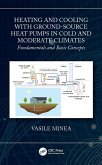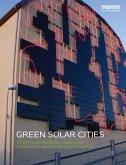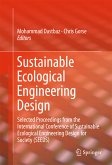This book highlights the significance of using sustainable energy to prevent the deterioration of our planet using heat pumps. Energy sustainability can be achieved through improved energy efficiency. In this regard, heat pumps offer an energy-efficient alternative for heating and cooling. To drive the adoption of heat pumps as a key component of sustainable buildings, the authors focus on examining sustainable practices in heat pump operations and innovative system design.
In view of the growing desire to use sustainable energy to meet heating and cooling demands and improve indoor air quality, this book offers a valuable reference guide to the available options in HVAC (heating, ventilation, and air-conditioning) system design. To begin with, the authors define sustainable energy and discuss the trend of "thinking green" in building design. They then discuss sustainable practices and heat pump applications in mapping out HVAC systems. In turn, they examine the use of green operations to promote sustainable practices and, in order to highlight the importance of innovative design, discuss the configuration options and precision control aspects. In closing, the authors illustrate innovative sustainable design on the basis of several energy-efficient cases.
The book's main goal is to drive the adoption of sustainable energy solutions. Heat pumps, it argues, represent the most efficient system for meeting commercial/recreational/residential heating and cooling demands. The book not only examines industrial practices in heat pump application, but also discusses advanced heat pump technologies and innovative heat pump designs.
Dieser Download kann aus rechtlichen Gründen nur mit Rechnungsadresse in A, B, BG, CY, CZ, D, DK, EW, E, FIN, F, GR, HR, H, IRL, I, LT, L, LR, M, NL, PL, P, R, S, SLO, SK ausgeliefert werden.
Es gelten unsere Allgemeinen Geschäftsbedingungen: www.buecher.de/agb
Impressum
www.buecher.de ist ein Internetauftritt der buecher.de internetstores GmbH
Geschäftsführung: Monica Sawhney | Roland Kölbl | Günter Hilger
Sitz der Gesellschaft: Batheyer Straße 115 - 117, 58099 Hagen
Postanschrift: Bürgermeister-Wegele-Str. 12, 86167 Augsburg
Amtsgericht Hagen HRB 13257
Steuernummer: 321/5800/1497
USt-IdNr: DE450055826
Bitte wählen Sie Ihr Anliegen aus.
Rechnungen
Retourenschein anfordern
Bestellstatus
Storno









